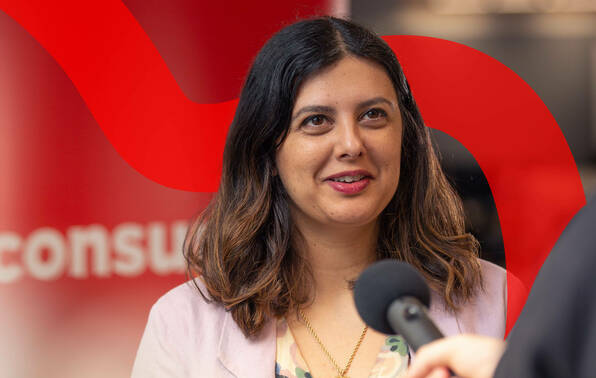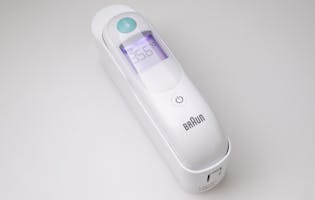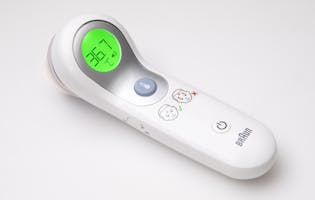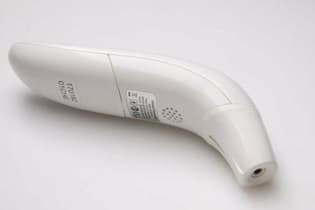Baby thermometer buying guide
A thermometer is a must-have in your first aid kit.
Having a sick child is stressful enough, so you want a thermometer that takes a quick accurate reading.
Types of baby thermometer
There are two main types of baby thermometers: digital probe and infrared digital. Whichever you choose, always read the instructions to ensure you get the most accurate reading. If you’re unsure, get your doctor to show you how to use it.
Digital probe thermometers
Probe models take oral and armpit readings, and most take rectal ones. These models usually claim an accuracy of +/- 0.1°C.
Infrared digital thermometers
Infrared models take a reading in the ear canal or on the forehead or temple. They are less invasive than a probe thermometer and quicker to use (you’ll get a reading in a couple of seconds). Infrared models don’t claim to be as accurate as probe models (but most claim an accuracy of +/- 0.2°C, which is still acceptable).
Forehead models aren’t considered accurate for babies younger than three months of age.
Other thermometers
Temperature strips. These plastic strips have heat-sensitive crystals that change colour to give a temperature reading. They are very easy to use but not very accurate so we don’t test them.
We also tested the Nurofen FeverSmart Temperature Monitor. This uses a Bluetooth enabled temperature monitor placed under your baby's armpit with an adhesive patch. It allows you to track temperature changes.
Things to consider
Display
This should be easy to read. A large or backlit display is best.
Audible signals
This lets you know when the thermometer is ready to use and has finished taking a reading. It’s usually a beep.
Fever indicator
Lets you know if a temperature is above normal.
Disposable probe covers
Covers keep the thermometer clean and hygienic, but are an ongoing cost when you run out. Wiping the probe with sterilising alcohol between readings also does the trick.
Memory
Stores previous readings, which is useful for monitoring whether temperature is improving or stabilising.
Tips for taking a temperature
Oral readings
- The probe should be placed under the tongue and the mouth closed.
- The child mustn’t eat or drink anything 15 minutes before taking the reading.
Armpit readings
- The armpit should be clean and dry.
- Touch the skin with the probe tip, then position the arm next to the body so room temperature doesn’t affect the reading. Gently hugging your child may help keep their arm in place.
- Armpit readings are usually 0.5°C lower than oral readings.
Other tips
- Don’t take a temperature immediately after a shower or bath – the reading will be high.
- After use, wipe the thermometer with a soft cloth and warm water or mild detergent. You can also sterilise the probe tip with alcohol (but avoid alcohol contact with the battery/display end). Don’t immerse in water unless the instructions state you can.
- Temperature readings aren’t a substitute for proper medical diagnosis. If you’re concerned, see a doctor.
- It’s a good idea to find out what your child’s temperature is when they’re not sick.
What’s too hot?
Normal body temperature is 37°C, but this is only approximate. It varies from person to person and depends on the time of day and where you take the temperature. Armpit readings are usually 0.5°C lower than oral ones. A mild fever is over 38°C, and a high fever is over 39°C.
Babies under three months with a mild fever and babies between three and six months with a high fever should be checked by a doctor.

We can't do this without you.
Consumer NZ is independent and not-for-profit. We depend on the generous support of our members and donors to keep us fighting for a better deal for all New Zealanders. Donate today to support our work.
We've tested 13 baby thermometers.
Find the right one for you.


